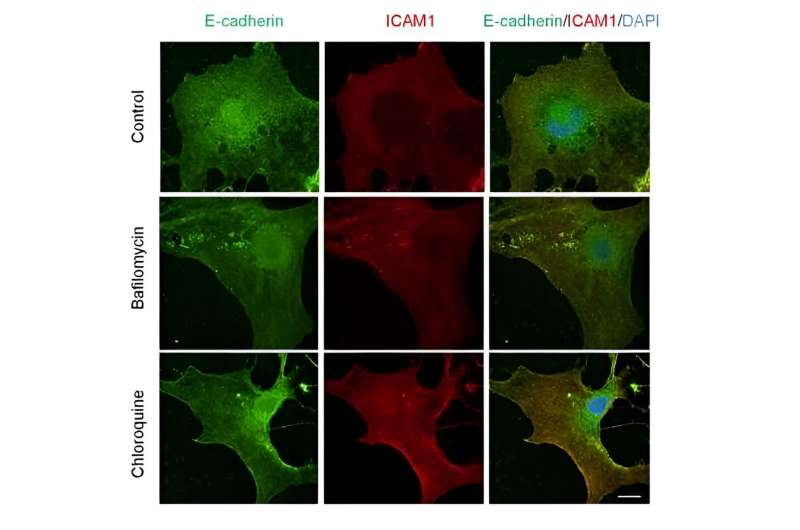This article has been reviewed according to Science X's editorial process and policies. Editors have highlighted the following attributes while ensuring the content's credibility:
fact-checked
peer-reviewed publication
proofread
Inflammation discovery advances the fight against chronic liver disease

In a world-first, QIMR Berghofer scientists have discovered the mechanism that causes severe inflammation among millions of people with chronic liver disease.
Published in Science Signaling, the discovery identifies how and why elevated ferritin (a protein that normally stores iron within cells) causes inflammation which ultimately leads to liver dysfunction including cirrhosis, liver cancer, and liver failure if left untreated.
Professor Grant Ramm, Deputy Director of QIMR Berghofer Medical Research Institute and head of the Hepatic Fibrosis Laboratory, said this finding could pave the way for new targeted therapeutics to treat both inherited and acquired liver disease.
"The association between inflammation and circulating ferritin levels in chronic liver disease is well known. However, rather than simply acting as a passive marker of inflammation, our research has demonstrated that tissue-derived ferritin stimulates a cascade of events at a cellular level, accelerating liver inflammation," said Professor Ramm.
"Inflammation is integral in driving early liver scarring, known as fibrosis. If undiagnosed or untreated, scarring can increase over time, severely impacting liver function.
"This study showed that ferritin binds to receptors on a particular type of liver fibroblast called hepatic stellate cells which causes the release of specific and potent cytokines. This process triggers inflammation, which in turn contributes to fibrosis and the progressive loss of liver function."
Professor Ramm said now that we understand the mechanisms responsible for this type of inflammation, we can conduct investigations aimed at interfering with the interaction between ferritin and its receptor to disrupt this liver inflammation.
"Advancing our understanding of the cell biology and mechanisms of inflammation is an important first "discovery research" step in the search for potential therapeutic targets which could alleviate inflammation and transform the lives of millions of people globally who suffer from liver disease," he said.
"Looking ahead our aim is to develop new anti-inflammatory therapeutics to treat inflammation and fibrosis and prevent the progression of chronic liver disease.
"We are currently using state-of-the-art molecular modeling techniques to identify the ferritin binding sequences on cell surface receptors that signal these proinflammatory cytokines."
More information: Manuel A. Fernandez-Rojo et al, The heavy subunit of ferritin stimulates NLRP3 inflammasomes in hepatic stellate cells through ICAM-1 to drive hepatic inflammation, Science Signaling (2024). DOI: 10.1126/scisignal.ade4335




















